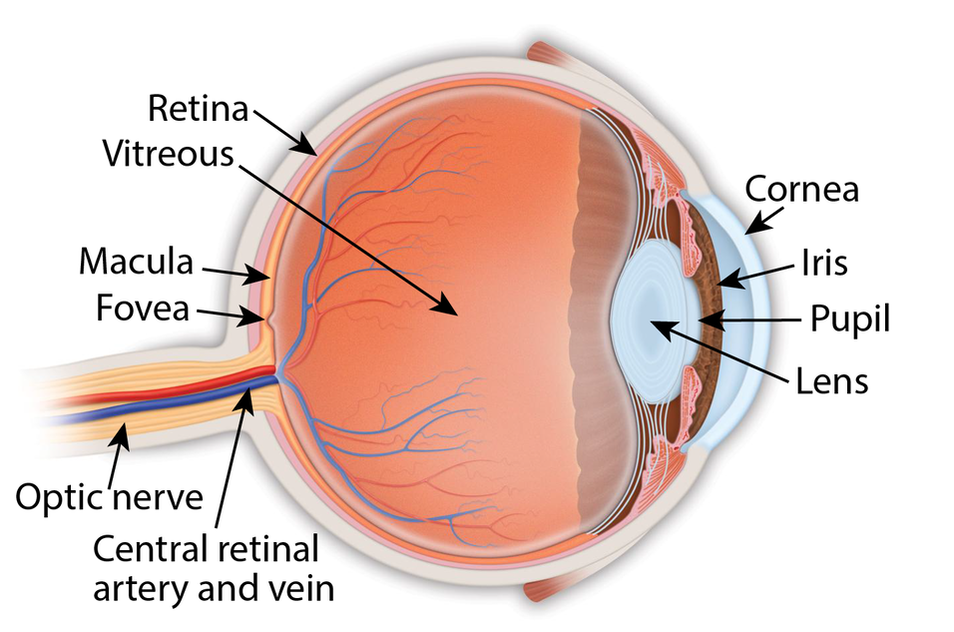Retina Conditions
Age-related Macular Degeneration (AMD)
Age-related macular degeneration (AMD) is an eye disease that affects the sharp, central vision needed for activities like reading and driving. AMD is a leading cause of vision loss for people age 50 and older, and doesn’t cause complete blindness. There are 2 types: dry and wet. Dry AMD is more common, occurring as the macula gets thinner with age and progresses slowly over years. Wet AMD is less common but can cause faster vision loss due to abnormal blood vessel growth and damage the macula. Wet AMD is treatable with intraocular injections. There is no treatment currently for dry AMD. Where is the macula? The macula is located in the center of the retina, the light-sensitive tissue at the back of the eye. The retina instantly converts light, or an image, into electrical impulses. The retina then sends these impulses, or nerve signals, to the brain. Can I have both dry and wet AMD? Yes. All patients with AMD start out with dry AMD. Over the course of a lifetime about 10% to 20% of patients with dry AMD develop the wet form of the disease. It is important that you know that the changes of dry AMD may continue to progress even after you develop wet AMD. It is also important to understand that wet AMD always develops in a patient with previous dry AMD. So if you have the dry form and you notice new symptoms do not assume these new symptoms are due to progression of the dry changes. Let your doctor know so that he or she can determine if wet AMD has developed and if you need treatment. Treatment consists of intraocular antivegf injections. PDT laser is used in certain cases. Information provided courtesy of the US National Institutes of Health, National Eye Institute.
To learn more, please ask our doctors, or visit https://www.nei.nih.gov/learn-about-eye-health/eye-conditions-and-diseases |
Eye Anatomy
Retina: the light-sensitive membrane in the back of the eye that converts light to electrical impulses that are sent to the brain through the optic nerve
Vitreous: also called vitreous humor, a thick, colorless gel that fills the large space in the middle of the eye, behind the lens Macula: the central retina that contains the fovea Fovea: a shallow pit in the center of the retina responsible for our sharpest straight ahead vision Optic nerve: carries the message of vision from the retina to the brain Cornea: transparent convex membrane that covers the pupil and iris of the eye Iris: colored part of the eye that consists of a muscular diaphragm surrounding the pupil and regulates the light entering the eye by expanding and contracting the pupil Pupil: dark circular opening at the center of the iris in the eye, where light enters the eye Lens: focuses light to produce an image on the light-sensitive cells of the retina. Nearly spherical and convex on both sides, it sits behind the pupil |
|
Copyright © 2021 Retina Consultants. All rights reserved.
|

